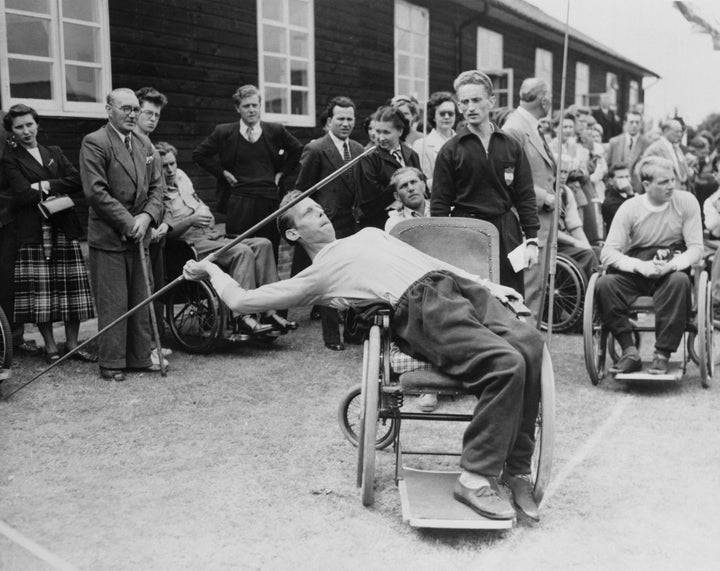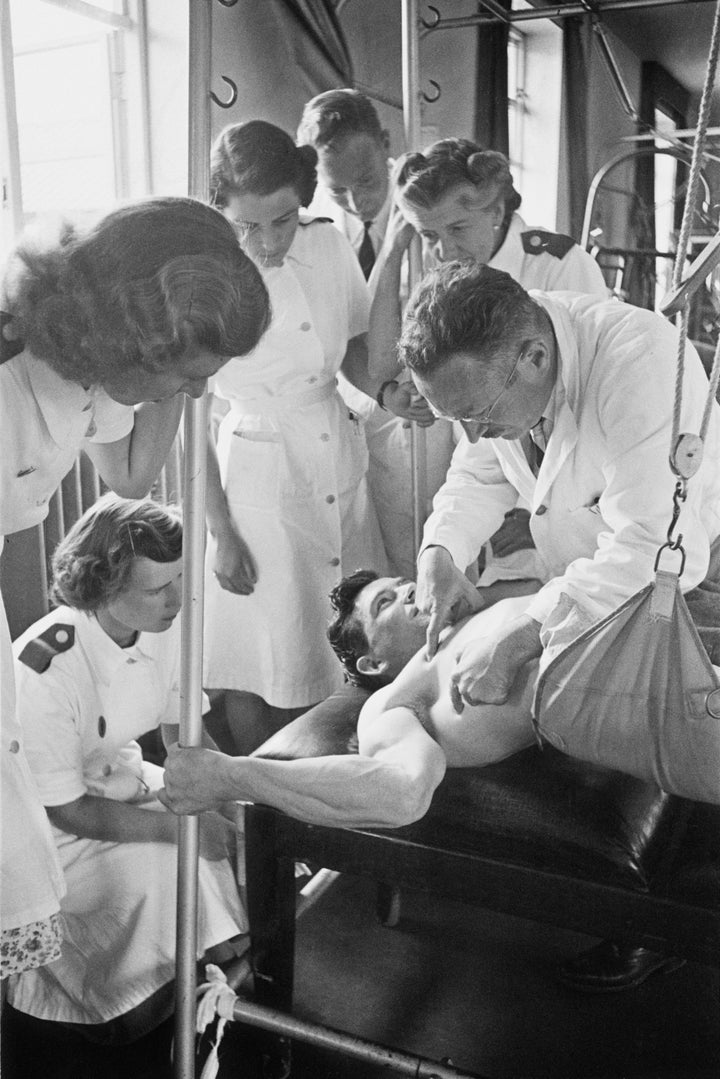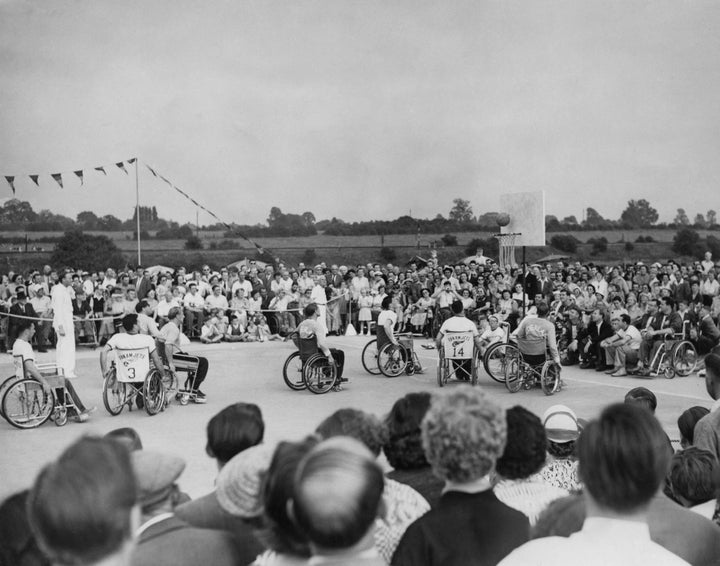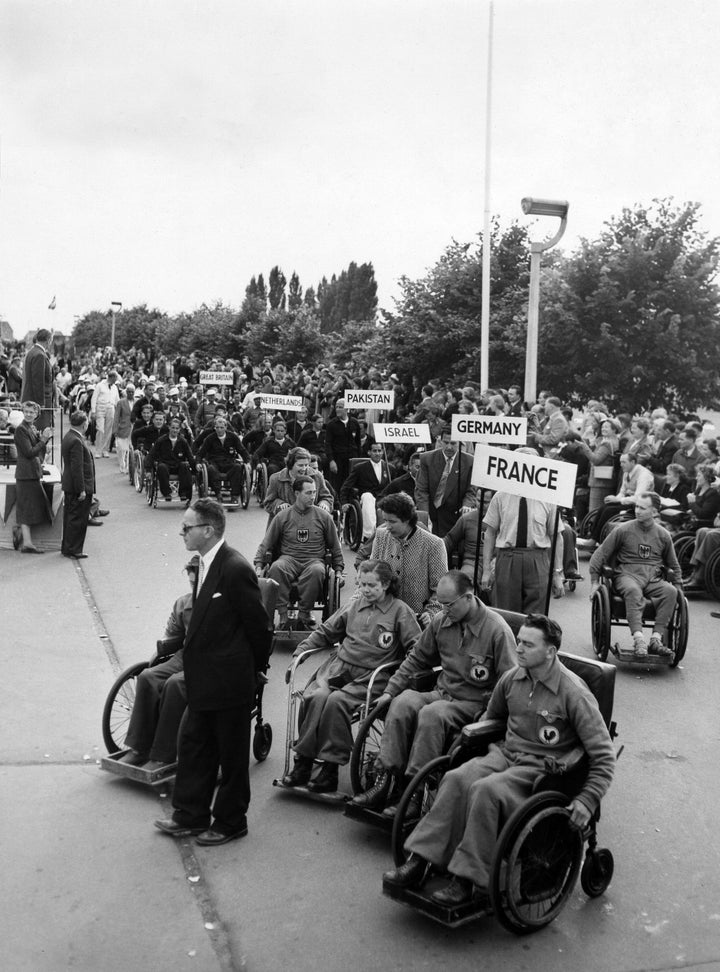
Less than a century ago, a spinal cord injury was considered something of a death sentence. Most people before World War II died within three years of sustaining one. And before death, they were mostly cast aside from society and forgotten, largely considered a lost cause.
But something changed in 1944 when a doctor named Ludwig Guttmann opened the Stoke Mandeville Hospital in Great Britain. A Jewish emigrant from Nazi Germany, Guttmann was a neurologist by trade who hoped to improve the general condition of paraplegics, and the Stoke Mandeville Hospital would become his center for helping those who sustained spinal injuries ― at first from the war, particularly from D-Day.

Unlike his neurological predecessors, however, Guttmann decided to focus not just on the body, but on the mind. One of the major issues for people with spinal cord injuries, he realized, was depression, understandably developed after being discarded by society and left in beds. And so, he worked tirelessly to infuse something new in them: a sense of optimism.
“They had basically been told in their previous hospitals that they would never walk again and that they were going to die ... And then suddenly here were these nurses saying, "You can do this. We’ve got to get you up."”
“They had basically been told in their previous hospitals that they would never walk again and that they were going to die. As a result most of them were badly depressed and not interested in doing anything. They had got used to lying immobile for months on end,” Joan, a nurse at the hospital, once remembered. “And then suddenly here were these nurses saying, ‘You can do this. We’ve got to get you up.’”
While Guttmann obsessed over his patients, he treated them like people, listening to them in hopes of discovering ways to convince the others that they had a place within society, too, rather than beside it. One of his chief rules, in fact, came not from him, but from one of his patients, who said, “The first duty of the paraplegic patient is to cheer up his visitors.”
“Games, sport, that is what we must have.”
- Dr. Ludwig Guttmann
The aha moment came at lunchtime in 1945, when Guttmann witnessed some of his patients using their walking sticks to hit a puck around. Up to that point, Guttmann had been focused on turning them in their beds, but realized he could do more. “Games, sport, that is what we must have,” he reportedly said.
Soon, the patients were competing in games of darts and archery and snooker. Then he moved them into team games, like wheelchair polo (a little too rough, it ended up) and wheelchair netball. The games served as a way to remind the patients they hadn’t lost their humanity, and they still had reason to believe in themselves. And it worked.

“My eyes were opened when we received one particular patient in 1956,” John Silver, one of Guttman’s doctors, once said. “He had had to wait 18 months before he could get transferred to Stoke; and when he came to us, he had every complication in the book; he was covered in pressure sores; his kidneys were full of stones; he was practically dead. And this man, working with poor staff who he had welded into a team that he could rely on (he had done it all himself), he cured him, sent him out into the world and back to a meaningful life.”
Eventually, Guttmann decided even more could be done. And in July 1948, on the same day of the opening ceremony of the London Olympic Games, he had 16 servicemen and women compete in an archery competition that would become known as the first Stoke Mandeville Games.

Over the next decade, the annual games would add sports and participants every year. In 1949, Guttmann added netball, and 37 competed. In 1950, he added javelin, and 61 competed. In 1951, he added snooker, and 126 competed. In 1952, former servicemen from the Netherlands competed, creating the International Stoke Mandeville Games. By 1954, the Stoke Mandeville Games included 250 competitors in seven sports from 14 nations. And by 1960, the games had moved out of Stoke Mandeville and into Rome, where what is now considered the first official Paralympic Games were played. At the time, they were called, simply, the 9th Annual International Stoke Mandeville Games.
Today, many people misinterpret the term “Paralympic,” thinking it to be a reference to paraplegics. But in truth, it means something much more in line with Guttman’s vision. “Para,” in this instance, comes from a Greek preposition, which means “to stand alongside.” In this case, as equals.


